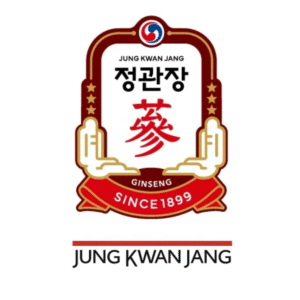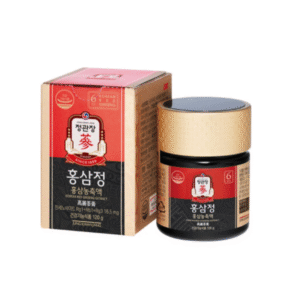Korean ginseng (Panax ginseng) is both a plant and a cultural emblem. Native to the forests of Korea and Manchuria, it has been prized for centuries for its unusually human-shaped root and its reputation as a restorative “tonic.” In Korea, ginseng (insam, 人蔘) became a strategic trade good, a state-managed industry, a subject of classical medical texts, and today a symbol of regional heritage and scientific agriculture. Below is a concise but comprehensive tour through two millennia of that history—how a shade-loving forest herb grew into one of Korea’s defining products.
1) Roots in Antiquity (1st–10th centuries)
- Early pharmacopoeias. One of the earliest extant medical references to ginseng appears in Shennong’s Classic of Materia Medica (Shénnóng Běncǎo Jīng), usually dated to the 1st–2nd century CE. That text helped establish ginseng’s profile as a superior restorative in East Asian medicine and set the stage for its later regional specializations, including Korea’s.
- Botanical home. The species Panax ginseng is native to Manchuria and Korea, which explains why Korean lineages and place-names (e.g., Goryeo/Koryŏ insam) recur so strongly in historical records and trade.
- Early exchange with China. As Korea’s polities interacted with Chinese dynasties, ginseng appeared in trade and exchange. Cultural histories of the Unified Silla (668–935) period record ginseng among exports to Tang China, signalling that by the early medieval era “Korean ginseng” was already meaningful in cross-border commerce.
2) Goryeo Era – From Wild Mountain Herb to Crafted Commodity (918–1392)
- Xu Jing’s 1123 account. The Song envoy Xu Jing visited Goryeo in 1123 and compiled the Gaoli Tujing (Goryeo Dogyeong). Modern scholarship points to this record as the earliest description of steaming and drying fresh ginseng—the technique that later defines red ginseng (hongsam). In other words, the processing that gives “Korean Red Ginseng” its identity has medieval roots.
- Merchants and centers. Goryeo’s commercial hubs—especially Gaeseong (Kaesong)—became closely associated with ginseng trading and processing, a prelude to the later state monopolies. Academic work tracking merchant activity shows Gaeseong’s role and how later policies reshaped it.
3) Joseon Dynasty – Canon, Classification, and Control (1392–1897)
- A medical ‘bible’. The Dongui Bogam (1613) by court physician Heo Jun crystallized Korean medical knowledge and repeatedly details ginseng’s character and uses. Its authority helped standardize how Korean doctors evaluated and prescribed ginseng for centuries.
- Tribute and diplomacy. Joseon presented ginseng to the Ming court, with documentary records even distinguishing forms—white (sun-dried, peeled), chosam (wild), and pasam (boiled/dried)—and noting shifts in what the Ming demanded (e.g., unpeeled “chosam” in 1602). This shows how Korean ginseng was entwined with high politics and ritual exchange.
- The rise of “red ginseng.” The specific term hongsam (red ginseng) appears in the Annals of King Jeongjo (r. 1776–1800), reflecting an 18th-century consolidation of processing terms and categories that Koreans still use—susam (fresh), baeksam (white/sun-dried), hongsam (steamed & dried). Researchers also find a surge in mentions of processed, taxed, and traded ginseng in 18th-century records.
- Punggi & local origin stories. Local histories famously credit mid-16th-century official Joo Sebung in Punggi (Yeongju) with encouraging cultivation; while widely told, modern reviews note the tale reads more legend than verifiable fact. Either way, by late Joseon Punggi and Geumsan were entrenched production zones.
4) The Ginseng Monopoly: Korean Empire to Colonial Period (1899–1945)
- A royal bureau is born (1899). In the 36th year of King Gojong, the court created Samjeonggwa, a royal ginseng bureau that formalized state control over cultivation and red-ginseng manufacturing. This marked the start of Korea’s modern ginseng administration.
- Monopoly and standardization. Through the colonial period and after, the red ginseng monopoly placed production, processing, quality, and export under government oversight—a system that research papers date (in practice) across most of the 1908–1996 span. Standard processes (steaming/drying, grading) from this era strongly shaped today’s methods.
- Market headwinds. Scholarship also notes that during the 1920s–30s, anti-Japanese resistance in China—Korea’s crucial export market—hurt hongsam sales, showing the industry’s vulnerability to geopolitics.
5) Science, Corporations, and Global Brands (1945–Present)
- Public R&D. Government-backed ginseng research ramped up in the 1960s (e.g., Ginseng Cultivation Research Institute, later part of a national research complex with tobacco), helping modernize breeding, disease control, and post-harvest handling.
- KT&G and KGC. After independence and industrialization, ginseng remained under a state-managed framework (eventually paired with tobacco). In 1995, the Insam Industry Act paved the way to end the monopoly; the monopoly system was abolished by 1996, and the market liberalized, with Korea Ginseng Corporation (CheongKwanJang) continuing as the best-known legacy brand in the private era.
- Heritage recognition. Korea designated the Geumsan Traditional Ginseng Agricultural System a national heritage site (2015), and in 2019 it entered the FAO’s Globally Important Agricultural Heritage Systems (GIAHS)—a rare international nod to a living farming tradition.
6) How Koreans Grow and Classify Ginseng
- A slow crop with strict terroir. Ginseng is typically grown 4–6 years under shade before harvest, a slow cycle that concentrates bioactive compounds. It is exceptionally sensitive to light, temperature, and soil pathogens; fields are rotated and often rested ~10 years after harvest.
- Processing families.
- Susam (fresh), used soon after harvest.
- Baeksam (white ginseng), sun-dried (traditionally peeled) to ~12% moisture.
- Hongsam (red ginseng), steamed then dried, a method recorded as early as the 12th century and widespread by late Joseon. Steaming improved shelf life and, as modern chemistry shows, alters ginsenoside profiles, creating the hallmark red color and a distinct pharmaco-chemical signature.
7) Places That Made the Name
- Punggi (Yeongju). Mountain margins near Sobaeksan gave Punggi a reputation for vigorous roots; the area promotes a ~500-year cultivation tradition and remains a research and production hub.
- Geumsan. With 1,500 years of lore and a famous marketplace, Geumsan is the face of Korean ginseng to many visitors—and the site recognized in KIAHS/GIAHS designations for preserving traditional methods at scale.
8) A Note on Evidence vs. Reputation
While ginseng’s reputation as a tonic is ancient and powerful, modern reference works keep a cautious stance about clinical efficacy. It is best understood historically as a prized trade good and a culturally significant medicinal plant whose documented value in Korea spans two millennia—even as 21st-century evidence for specific medical indications remains mixed.
9) A 2,000-Year Timeline at a Glance
- 1st–2nd c. CE — Ginseng recorded in Shennong’s classic pharmacopoeia.
- 668–935 — Silla–Tang exchange includes ginseng among exports.
- 1123 — Gaoli Tujing describes steaming/drying of ginseng; Korea’s red-ginseng pathway appears in writing.
- 16th c. — Punggi cultivation traditions take shape (famous but partly legendary origin story).
- 1613 — Dongui Bogam codifies ginseng’s role in Korean medicine.
- 18th c. — Records spike for processed/traded ginseng; hongsam (red ginseng) named in the Annals of King Jeongjo.
- 1899 — Samjeonggwa (royal ginseng bureau) founded; state control formalized.
- 1908–1996 — Red ginseng monopoly era (standardization, quality control, export).
- 1960s–1980s — National R&D and factory expansion modernize cultivation/processing.
- 1995–1996 — Insam Industry Act and end of monopoly; market liberalizes.
- 2015/2019 — Geumsan system recognized as KIAHS (2015) and GIAHS (2019).
Closing
From tribute halls and royal seals to research institutes and global brands, Korean ginseng’s story is unusually continuous: a forest herb native to Korea becomes a state craft, then a modern industry and a recognized agricultural heritage. If you’d like, I can adapt this history into a web-ready article with figures (maps, historical images, and a sourcing box), or expand specific periods (e.g., Dongui Bogam’s recipes, Gaoli Tujing’s processing notes, or the 20th-century monopoly laws) into standalone sections.



